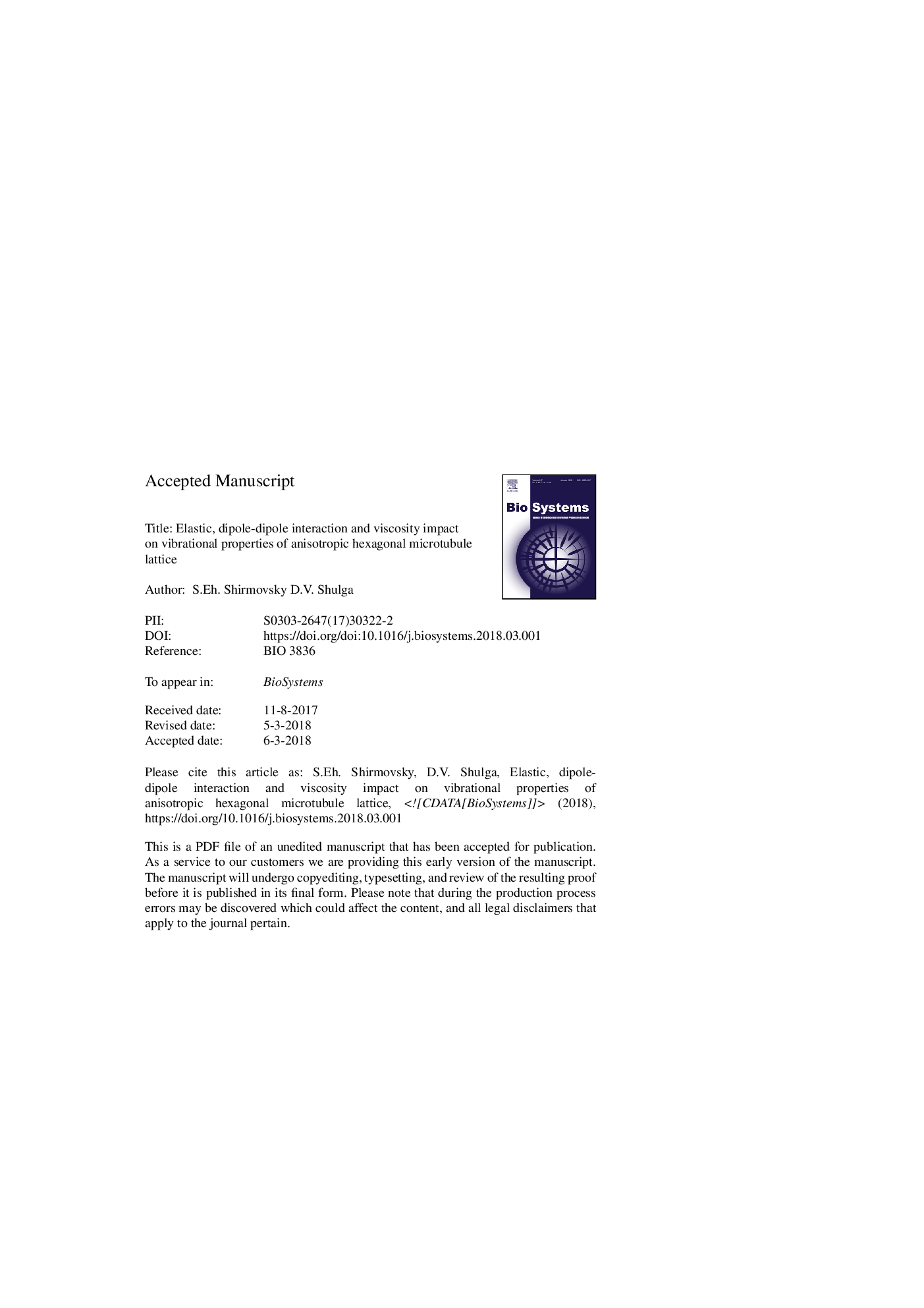| Article ID | Journal | Published Year | Pages | File Type |
|---|---|---|---|---|
| 8406451 | Biosystems | 2018 | 53 Pages |
Abstract
The paper investigates microtubules lattice properties taking into consideration elastic, dipole-dipole interaction of tubulins and viscosity. A microtubule is modeled as a system of bound tubulins, forming a skewed hexagonal two-dimensional lattice. Wave frequencies and group velocities have been calculated. Calculations have been performed for various directions of wave front propagation: helix, along the protofilament, and anti-helix. Three different wave polarization directions have been considered. It has been shown that the direction of the wave polarization influences the frequency and wave group velocity values in the lattice considerably. The impact of dipole-dipole interaction greatly depends on the direction of the wave polarization; thus, it is only moderate for the longitudinally (LA) polarized waves while it is sufficient for the transversely (TA), and out-of-plane (ZA) polarized waves. Moreover dipole-dipole interaction may result in the waves which are able to cause the rupture of microtubules. With viscosity considered, lattice oscillations become harmonically damped only over a certain wavelength range when longitudinal polarization occurs. Out of this range as well as for the other polarization directions, lattice deviations from equilibrium are dampened exponentially. Taking viscosity into consideration also results in a noticeable decrease in frequency and increase in the group wave velocity when the waves are longitudinally polarized. Reverse wave domains which may be associated with a possible phenomenon of negative refraction have been determined for hexagonal microtubule lattice.
Keywords
Related Topics
Physical Sciences and Engineering
Mathematics
Modelling and Simulation
Authors
S.Eh. Shirmovsky, D.V. Shulga,
